Economy of Kalgachia
"Stockpiles? I'll say. If ever this Garden of ours falls to some foreign horde, our conquerors will never need to lift a finger in work again."
The Economy of Kalgachia has several distinctive features determined by the geography of the country, its natural resources, its geopolitical isolation and the cultivated work ethic of its population. It tends heavily toward the production and exchange of physical commodities, with most aspects of the service and infrastructure sectors being nationalised or church-owned as was the case in its predecessor state, Minarboria.
Land Ownership and the Primacy of the Church
Although free economic enterprise is nominally permitted in Kalgachia, it falls short of capitalistic excess in large part due to a prohibition on the private ownership of land and its consequent absence as a tradeable asset - any land not directly requisitioned by central state organs defaults to the ownership of the Church of Kalgachia, each parish of which is obliged to provide its inhabitants with housing. Although the operation of small-scale private enterprises from church-owned housing is permitted and communal marketplaces are maintained in most parishes for the sale of private goods, business ventures requiring dedicated premises are only allotted land if they cede themselves to Church ownership (in practice this is generally a formality, with such businesses retaining their previous management and permitted some freedom to operate as long as their activities remain within the moral imperatives of Church doctrine).
Church-owned housing is graded as follows:
- Local jails
- Hostels for newly released convicts/lunatics, transients and vagabonds
- Homes for invalids, orphans, geriatrics and similarly worthy destitutes
- Homes for the working class
- Homes for the managerial class
- Homes for the executive class
The Church pays for the upkeep of its housing - along with other Parish-level public services for which it is entirely responsible - through its considerable accretion of business interests which, even after the cost of public services is deducted, makes it by far the wealthiest entity in Kalgachia (this funding model was originally pioneered by the Church of Minarboria through its subsidiary 'Shrubway' restaurant chain). This has occasionally caused problems of corruption among the junior clergy requiring central intervention, but it is generally agreed that without the moral and spiritual vigilance of the Church against the insidious temptations of the pecuniary archon, the sequestration of such a large proportion of Kalgachia's wealth in the hands of any other authority would be disastrous.
The Church-owned businesses of each Kalgachi Parish are required to tithe a proportion of their production to their superior March, the greatest proportion of that being tithed onward to the Directorate of Labour and Economic Planning (DLEP) for use in large projects. Industries of designated strategic importance are run as unitary enterprises under the direct ownership of the DLEP or other state organs.
The Sanctity of Food
Due to Kalgachia's strict policy of maintining 'food sovereignty' on agriculturally sub-optimal terrain, all production of food is monitored closely by the Directorate of Health and Public Welfare (DHPW) which is empowered to impose corrective measures - upto and including full management takeovers - of any food producers, processors or distributors considered to be wasteful in their operations. It works closely with Kalgachia's internal security service, the Prefects, to identify price-gougers or hoarders. Church partisans do however enjoy the exclusive privilege of hoarding food in their many concealed caches, the partisans' status as a food source being considered essential in wartime to maintain local support during an invader's punitive reprisals against civilians for partisan activity, as well as offering a lifeline in case of the attempted extermination of the Kalgachi population by artificial famine (including on a strategic level by the deployment of mass chemical defoliants or biological pests against Kalgachi farming areas). In addition to this, the DHPW itself maintains substantial reserves of long-shelf-life food in deep underground installations.
Due to a risk inexplicably termed by initiate seers of the Troglodyti as 'Ceaușescu's Folly', the import or export of food to or from Kalgachia is strictly forbidden, with the exception of recreational beverages such as Stalemate Gin. This theoretically ensures that the nutrition of the population never becomes existentially dependent on foreign trade and eliminates a vulnerability which might be leveraged against Kalgachia by foreign powers. In practice however, the small-time smuggling of luxury or exotic foods unobtainable by domestic means - such as saltwater fish - is persistent and in places officially tolerated.
Important Sectors
The Kalgachi economy is geared heavily toward national autarky and deals overwhelmingly in raw materials and commodities, assisted by the heavy exploitation of native energy sources. The Kalgachi standard of living, whilst broadly tolerable, is nonetheless a fraction of that suggested by the nation's industrial capacity - this is due to the reservation of a substantial portion for national defence and the stockpiling of essential supplies to sustain the Kalgachi nation in times of blockade or war, priorities which override all others in national economic planning.
The largest five sectors of the Kalgachia economy (measured by labour input) are:
- 1. Agriculture (41% arable, 36% subsistence, 23% livestock)
- 2. Forestry (68% for energy, 19% for construction, 13% for manufacturing)
- 3. Energy (38% geothermal electricity, 24% charcoal production, 15% charcoal gasification, 12% chargas-hydrocarbon liquefaction, 8% hydroelectricity, 3% charcoal electricity)
- 4. Manufacturing (28% armaments, 24% processed food, 14% infrastructural supplies, 11% textiles, 10% machinery and conveyances, 9% consumer goods, 4% miscellaneous)
- 5. Mining (36% aggregates, 27% stone, 19% gold, 11% tungsten, 7% trace minerals)
Unitary Enterprises
The following Kalgachi enterprises are considered so strategically important or dependent on specialist input that they are vertically integrated into non-Church organs of the Kalgachi government. Those concerned with the manufacture of consumer goods often operate their own retail outlets in large urban centres.
| Logo | Name | Owner | Activity |
|---|---|---|---|
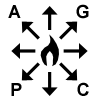 |
All-Garden Pyroenergetics Complex | DLEP | Manufacture of combustion powerplants - rocket motors, aviation-spec turbines and wood-gas engines |
 |
Associated Crucibles | DLEP | Smelting, heavy machining and recycling of metals |
 |
AzothChem | Troglodyti | Chemical production |
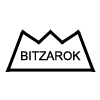 |
Bitzarok | DPW | Quarrying and construction aggregate production |
 |
Bleep Works | Prefects | Manufacture of military board circuitry, sensors, logic and guidance systems in secure conditions |
 |
Blobst | DLEP | Medium/heavy machine building |
 |
Buluhk Mining | Lieutenancy of Schlepogora | Gold mining and smelting (profits distributed to Laqi population of Schlepogora) |
 |
Deep Services | Troglodyti | Data analytics and management consultancy |
 |
Dobbinibbles | KDF | Horse feed production |
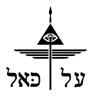 |
El Kal | DPW | Civil air transport |
 |
Goodvial | DHPW | Pharmaceutical production |
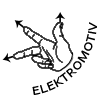 |
Elektromotiv | DPW | Manufacture of heavy electrical plant |
 |
Hyssengurgel | DLEP | Manufacture of hydraulic and pneumatic systems |
 |
Jollyvision | DEO | Manufacture of electronic media and communication devices |
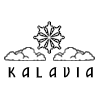 |
Kalavia | KDF | Manufacture of government aircraft |
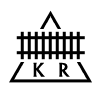 |
Kalgachi Railways | DPW | Rail transport |
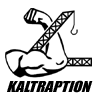 |
Kaltraption | DPW | Manufacture of construction, agricultural and logging machinery |
 |
Ketgachia | DLEP | Licensed manufacture of foreign automobiles (80% of profits remitted to Ketek Ketshire Automotive Technologies of Suthergold-Norestria) |
 |
Medkhoz | DHPW | Agriculture and food processing |
 |
Melliphone | DEO | Production of audio and visual recording media |
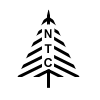 |
National Timber Complex | DLEP | Forestry, timber production, chip/pulp/paper manufacture, wood gas refinement |
 |
Neopreparat | DHPW | Microbiological solutions |
 |
Octavian Import-Export Corporation | 51 % DLEP (foreign registered) | Imports and Exports |
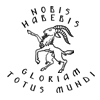 |
Reserve Bank of Kalgachia | DLEP | Gold bullion assay and stockpiling, currency minting |
 |
Silent Wonder | DEO | Publishing |
 |
Skivnikproof | KDF | Manufacture of inert military equipment |
 |
Snugtogs | DLEP | Manufacture of textiles and textile products |
 |
Trannytronics | DLEP | Manufacture of civilian board circuitry and logic systems |
 |
United Gunnery | KDF | Manufacture of barreled weapons |
 |
Whizzbang | KDF | Manufacture of cartridge and rocket munitions |
Currency
Kalgachi currency adheres to a very literal form of the gold standard, containing that precious metal physically within all its denominations. The base unit of Kalgachi currency is the Kalgarrand (kgr), a coin of 99.9% fine gold at a weight of 31.1 grams (1 troy ounce), 2mm thickness and a very small diameter of 18.08mm. Owing to its immense value and impractical ductility, the Kalgarrand coin is not often used in everyday commerce and where it is, it is invariably mounted within a protective casing. Denominations of Kalgarrand are minted as an alloy of tin with the appropriate proportion of gold content. The most valuable of these is the Half Kalgarrand, of equal weight in both gold and tin although the lesser density of the latter results in a larger coin of 22.44mm diameter. Coins of lower value retain the Half Kalgarrand's size, but with less gold and more tin as appropriate to their denomination. The differing proportions and densities of the alloyed metals give each coin a unique lustre and weight profile which aids greatly in authentication, although this variance is less discernible in lower denominations and generally requires specialised analysis such as spectrometry.
Although traditionally expressed as a fraction for high-value transactions, sub-Kalgarrand amounts are expressed decimally as Millirand (thousandths of a Kalgarrand) in everyday use.
Gold and Currency Production / Foreign Expenditure Data (30yr)
| Year | Gold mined and smelted | Gold allotted to industrial/aesthetic uses | Gold committed to Strategic Bullion Reserve | Gold exported abroad from Strategic Bullion Reserve[1] | Gold minted into Kalgarrand | Kalgarrand spent abroad from domestic circulation[2] | Kalgarrand released into domestic circulation | Kalgarrand spent abroad from Strategic Currency Reserve[3] | Kalgarrand committed to Strategic Currency Reserve |
|---|---|---|---|---|---|---|---|---|---|
| 183 AL[4] | 26 tonnes (of a potential 150 tonnes) |
26 tonnes (from new gold production) |
none | none | none | 2346 kgr | 2346 kgr (from Strategic Currency Reserve) |
34,881 kgr | none |
| 184 AL[5] | 28 tonnes (of a potential 150 tonnes) |
25 tonnes (from new gold production) |
3 tonnes | none | none | 2901 kgr | 2901 kgr (from Strategic Currency Reserve) |
35,078 kgr | none |
| 185 AL[6] | 25 tonnes (of a potential 150 tonnes) |
23 tonnes (from new gold production) |
2 tonnes | none | none | 2414 kgr | 2414 kgr (from Strategic Currency Reserve) |
34,598 kgr | none |
| 186 AL[7] | 27 tonnes (of a potential 150 tonnes) |
26 tonnes (from new gold production) |
1 tonnes | 1 tonne | none | 2983 kgr | 2983 kgr (from Strategic Currency Reserve) |
37,117 kgr | none |
| 187 AL[8] | 26 tonnes (of a potential 150 tonnes) |
23 tonnes (from new gold production) |
2 tonnes | none | none | 2424 kgr | 2424 kgr (from Strategic Currency Reserve) |
34,679 kgr | none |
| 188 AL[9] | 32 tonnes (of a potential 150 tonnes) |
25 tonnes (from new gold production) |
7 tonnes | 11 tonnes[10] | none | 2396 kgr | 2396 kgr (from Strategic Currency Reserve) |
43,566 kgr | none |
| 189 AL[11] | 35 tonnes (of a potential 150 tonnes) |
24 tonnes (from new gold production) |
11 tonnes | 9 tonnes | none | 2402 kgr | 2402 kgr (from Strategic Currency Reserve) |
41,814 kgr | none |
| 190 AL[12] | 90 tonnes (of a potential 150 tonnes) |
27 tonnes (from new gold production) |
none | 10 tonnes | 63 tonnes totalling 2,025,723 kgr (from new gold production) |
2455 kgr | 1,350,482 kgr (from newly minted currency) |
38,927 kgr | 675,241 kgr (from newly minted currency) |
| 191 AL[13] | 90 tonnes (of a potential 150 tonnes) |
28 tonnes (from new gold production) |
none | 6 tonnes | 62 tonnes totalling 1,993,569 kgr (from new gold production) |
2732 kgr | 1,329,046 kgr (from newly minted currency) |
39,088 kgr | 664,523 kgr (from newly minted currency) |
| 192 AL[14] | 105 tonnes (of a potential 150 tonnes) |
30 tonnes (from new gold production) |
5 tonnes | 4 tonnes | 70 tonnes totalling 2,250,803 kgr (from new gold production) |
3211 kgr | 1,500,536 kgr (from newly minted currency) |
40,412 kgr | 750,267 kgr (from newly minted currency) |
| 193 AL[15] | 128 tonnes (of a potential 150 tonnes) |
29 tonnes (from new gold production) |
10 tonnes | 8 tonnes | 89 tonnes totalling 2,861,736 kgr (from new gold production) |
3387 kgr | 578,925 kgr (from newly minted currency) |
542,648 kgr[16] | 1,736,776 kgr (from newly minted currency) |
| 194 AL[17] | 132 tonnes (of a potential 150 tonnes) |
26 tonnes (from new gold production) |
12 tonnes | 7 tonnes | 94 tonnes totalling 3,022,508 kgr (from new gold production) |
3222 kgr | 755,627 kgr (from newly minted currency) |
42,616 kgr | 2,224,265 kgr (from newly minted currency) |
| 195 AL[18] | 130 tonnes (of a potential 150 tonnes) |
25 tonnes (from new gold production) |
10 tonnes | 5 tonnes | 95 tonnes totalling 3,054,662 kgr (from new gold production) |
3113 kgr | 763,666 kgr (from newly minted currency) |
40,981 kgr | 2,290,996 kgr (from newly minted currency) |
| 196 AL[19] | 146 tonnes (of a potential 150 tonnes) |
27 tonnes (from new gold production) |
20 tonnes | 17 tonnes | 99 tonnes totalling 3,183,279 kgr (from new gold production) |
2814 kgr | 1,061,093 kgr (from newly minted currency) |
67,027 kgr | 2,122,186 kgr (from newly minted currency) |
| 197 AL[20] | 148 tonnes (of a potential 150 tonnes) |
30 tonnes (from new gold production) |
26 tonnes | 21 tonnes | 92 tonnes totalling 2,958,199 kgr (from new gold production) |
2494 kgr | 986,066 kgr (from newly minted currency) |
70,012 kgr | 1,972,133 kgr (from newly minted currency) |
| 198 AL[21] | 149 tonnes (of a potential 150 tonnes) |
26 tonnes (from new gold production) |
24 tonnes | 19 tonnes | 99 tonnes totalling 3,183,279 kgr (from new gold production) |
2436 kgr | 2,122,186 kgr (from newly minted currency) |
69,710 kgr | 1,061,093 kgr (from newly minted currency) |
| 199 AL[22] | 148 tonnes (of a potential 150 tonnes) |
24 tonnes (from new gold production) |
18 tonnes | 12 tonnes | 106 tonnes totalling 3,408,360 kgr (from new gold production) |
2472 kgr | 2,272,240 kgr (from newly minted currency) |
56,490 kgr | 1,136,120 kgr (from newly minted currency) |
| 200 AL[23] | 125 tonnes (of a potential 150 tonnes) |
25 tonnes (from new gold production) |
15 tonnes | 9 tonnes | 89 tonnes totalling 2,733,118 kgr (from new gold production) |
2508 kgr | 1,822,079 kgr (from newly minted currency) |
43,501 kgr | 911,039 kgr (from newly minted currency) |
| 201 AL[24] | 110 tonnes (of a potential 150 tonnes) |
23 tonnes (from new gold production) |
10 tonnes | 6 tonnes | 81 tonnes totalling 2,604,501 kgr (from new gold production) |
2419 kgr | 1,736,334 kgr (from newly minted currency) |
41,909 kgr | 868,167 kgr (from newly minted currency) |
| 202 AL[25] | 107 tonnes (of a potential 150 tonnes) |
25 tonnes (from new gold production) |
12 tonnes | 3 tonnes | 70 tonnes totalling 2,250,803 kgr (from new gold production) |
2388 kgr | 1,125,401 kgr (from newly minted currency) |
34,042 kgr | 1,125,402 kgr (from newly minted currency) |
| 203 AL[26] | 96 tonnes (of a potential 150 tonnes) |
25 tonnes (from new gold production) |
none | none | 71 tonnes totalling 2,282,958 kgr (from new gold production) |
2327 kgr | 570,739 kgr (from newly minted currency) |
35,556 kgr | 1,712,219 kgr (from newly minted currency) |
| 204 AL[27] | 30 tonnes (of a potential 150 tonnes) |
21 tonnes (from new gold production) |
9 tonnes | none | none | 2331 kgr | 2331 kgr (from Strategic Currency Reserve) |
34,100 kgr | none |
| 205 AL[28] | 20 tonnes (of a potential 150 tonnes) |
20 tonnes (from new gold production) |
none | none | none | 2326 kgr | 2326 kgr (from Strategic Currency Reserve) |
1817 kgr[29] | none |
| 206 AL[30] | 22 tonnes (of a potential 150 tonnes) |
28 tonnes (22 tonnes from new gold production, 6 tonnes from Strategic Bullion Reserve) |
none | 13 tonnes | none | 3735 kgr | 3735 kgr (from Strategic Currency Reserve) |
51,998 kgr | none |
| 207 AL[31] | 31 tonnes (of a potential 150 tonnes) |
30 tonnes (from new gold production) |
1 tonne | 9 tonnes | none | 4040 kgr | none | 54,783 kgr | none |
| 208 AL[32] | 34 tonnes (of a potential 150 tonnes) |
28 tonnes (from new gold production) |
6 tonnes | 8 tonnes | none | 4892 kgr | none | 53,354 kgr | none |
| 209 AL[33] | 35 tonnes (of a potential 150 tonnes) |
31 tonnes (from new gold production) |
4 tonnes | 5 tonnes | none | 4913 kgr | none | 55,205 kgr | none |
| 210 AL[34] | 41 tonnes (of a potential 150 tonnes) |
32 tonnes (from new gold production) |
9 tonnes | 7 tonnes | none | 5100 kgr | none | 55,089 kgr | 300,000 kgr (transferred from domestic circulation by Church of Kalgachia) |
| 211 AL[35] | 43 tonnes (of a potential 150 tonnes) |
30 tonnes (from new gold production) |
13 tonnes | 5 tonnes | none | 5049 kgr | none | 54,161 kgr | none |
| 212 AL[36] | 45 tonnes (of a potential 150 tonnes) |
31 tonnes (from new gold production) |
14 tonnes | 6 tonnes | none | 5272 kgr | none | 56,102 kgr | none |
| 213 AL[37] | 54 tonnes (of a potential 150 tonnes) |
33 tonnes (from new gold production) |
11 tonnes | 10 tonnes | none | 6115 kgr | none | 61,194 kgr | none |
Gold and Currency Stocks (Cumulative 30yr)
| Year (end of) |
Total bullion in Strategic Reserve | Total Kalgachi-assayed bullion abroad[38] | Total Kalgarrand in Strategic Reserve | Total Kalgarrand in domestic circulation | Total Kalgarrand abroad[39] |
|---|---|---|---|---|---|
| 183 AL | 255 tonnes | 30 tonnes | 19,439,351 kgr | 18,500,000 kgr | 4,151,414 kgr |
| 184 AL | 258 tonnes | 30 tonnes | 19,401,372 kgr | 18,500,000 kgr | 4,189,393 kgr |
| 185 AL | 260 tonnes | 30 tonnes | 19,364,360 kgr | 18,500,000 kgr | 4,226,405 kgr |
| 186 AL | 260 tonnes | 31 tonnes | 19,324,260 kgr | 18,500,000 kgr | 4,266,505 kgr |
| 187 AL | 262 tonnes | 31 tonnes | 19,287,157 kgr | 18,500,000 kgr | 4,303,608 kgr |
| 188 AL | 258 tonnes | 42 tonnes | 19,241,195 kgr | 18,500,000 kgr | 4,349,570 kgr |
| 189 AL | 260 tonnes | 51 tonnes | 19,196,979 kgr | 18,500,000 kgr | 4,393,786 kgr |
| 190 AL | 250 tonnes | 61 tonnes | 19,833,293 kgr | 19,848,027 kgr | 4,435,168 kgr |
| 191 AL | 244 tonnes | 67 tonnes | 20,458,728 kgr | 21,174,341 kgr | 4,476,988 kgr |
| 192 AL | 245 tonnes | 71 tonnes | 21,168,583 kgr | 22,671,666 kgr | 4,520,611 kgr |
| 193 AL | 247 tonnes | 79 tonnes | 22,362,711 kgr | 23,247,204 kgr | 5,066,646 kgr |
| 194 AL | 252 tonnes | 86 tonnes | 24,544,360 kgr | 23,999,609 kgr | 5,112,484 kgr |
| 195 AL | 257 tonnes | 91 tonnes | 26,794,375 kgr | 24,760,162 kgr | 5,156,578 kgr |
| 196 AL | 260 tonnes | 108 tonnes | 28,849,534 kgr | 25,818,441 kgr | 5,226,419 kgr |
| 197 AL | 265 tonnes | 129 tonnes | 30,751,655 kgr | 26,802,013 kgr | 5,298,925 kgr |
| 198 AL | 270 tonnes | 148 tonnes | 31,743,038 kgr | 28,921,763 kgr | 5,371,071 kgr |
| 199 AL | 276 tonnes | 160 tonnes | 32,822,668 kgr | 31,191,531 kgr | 5,430,033 kgr |
| 200 AL | 282 tonnes | 169 tonnes | 33,690,206 kgr | 33,011,102 kgr | 5,476,042 kgr |
| 201 AL | 286 tonnes | 175 tonnes | 34,516,464 kgr | 34,745,017 kgr | 5,520,370 kgr |
| 202 AL | 295 tonnes | 178 tonnes | 35,608,824 kgr | 36,868,030 kgr | 5,556,800 kgr |
| 203 AL | 295 tonnes | 178 tonnes | 37,285,487 kgr | 37,436,442 kgr | 5,594,683 kgr |
| 204 AL | 304 tonnes | 178 tonnes | 37,249,056 kgr | 37,436,442 kgr | 5,631,114 kgr |
| 205 AL | 304 tonnes | 178 tonnes | 37,247,239 kgr | 37,436,442 kgr | 5,635,257 kgr |
| 206 AL | 285 tonnes | 191 tonnes | 37,191,506 kgr | 37,436,442 kgr | 5,690,990 kgr |
| 207 AL | 277 tonnes | 200 tonnes | 37,136,723 kgr | 37,432,402 kgr | 5,729,813 kgr |
| 208 AL | 275 tonnes | 208 tonnes | 37,083,369 kgr | 37,427,510 kgr | 5,788,059 kgr |
| 209 AL | 274 tonnes | 213 tonnes | 37,028,164 kgr | 37,422,597 kgr | 5,848,177 kgr |
| 210 AL | 276 tonnes | 220 tonnes | 37,273,075 kgr | 37,117,497 kgr | 5,908,366 kgr |
| 211 AL | 282 tonnes | 218 tonnes | 37,218,914 kgr | 37,112,448 kgr | 5,907,387 kgr |
| 212 AL | 290 tonnes | 224 tonnes | 37,162,812 kgr | 37,107,176 kgr | 5,968,761 kgr |
| 212 AL | 291 tonnes | 234 tonnes | 37,101,618 kgr | 37,101,061 kgr | 6,036,070 kgr |
Foreign Payments
Notable Standing Payments
- 4,600 kgr per year from the Church of Kalgachia to Chicken King of the Florian Republic (since 209 AL) - restaurant franchise fees
Notable Historic Payments
- 1,472,000 kgr from the Kalgachi government to Sokoku Industries of Jingdao (between 159-204 AL) - aircraft purchase and maintenance payments
- 500,000 kgr from the Kalgachi government to the Iron Company of Kasterburg (193 AL) - payment for an expansion of Gravelbottom Airport
- 87,400 kgr from the Church of Kalgachia to Chicken King of the Florian Republic (between 171-208 AL) - restaurant franchise fees
- 35,000 kgr from the Kalgachi government to the government of Kasterburg (between 170-204 AL) - airspace transit fees
Before 205 AL the majority of Kalgachia's remaining cash outflow (and a corresponding proportion of gold bullion) was paid to various enterprises of the Port of Vines via the Octavian Import-Export Corporation and the Nova English Trading Company. After 205 AL the emphasis switched to enterprises of the Batavian Confederation, much of it through the Iron Company. An substantial amount is also circulated through Kalgachia's protectorates.
Footnotes
- ^ Minus Kalgachi bullion recovered from abroad.
- ^ Minus Kalgarrand recovered from abroad.
- ^ Minus Kalgarrand recovered from abroad.
- ^ July 11th to July 20th, 2018.
- ^ July 21st to July 30th, 2018.
- ^ July 31st to August 9th, 2018.
- ^ August 10th to August 19th, 2018.
- ^ August 20th to August 29th, 2018.
- ^ August 30th to September 8th, 2018.
- ^ This spike in bullion exports being advance payment for violently accelerated importation of recyclable raw materials (principally refined metals, rubber and hydrocarbon polymers) via the Kasterburg port and rail network, overwhelmingly destined for the DLEP's strategic sub-surface stockpiles.
- ^ September 9th to September 18th, 2018.
- ^ September 19th to September 28th, 2018.
- ^ September 29th to October 8th, 2018.
- ^ October 9th to October 18th, 2018.
- ^ October 19th to October 28th, 2018.
- ^ Increased due to payment of the Iron Company in Kasterburg for an expansion of Gravelbottom Airport.
- ^ October 29th to November 7th, 2018.
- ^ November 8th to November 17th, 2018.
- ^ November 18th to November 27th, 2018.
- ^ November 28th to December 7th, 2018.
- ^ December 8th to December 17th, 2018.
- ^ December 18th to December 27th, 2018.
- ^ December 28th, 2018 to January 6th, 2019.
- ^ January 6th to January 16th, 2019.
- ^ January 17th to January 26th, 2019.
- ^ January 27th to February 5th, 2019.
- ^ January 27th to February 5th, 2019.
- ^ February 16th to February 25th, 2019.
- ^ This drop in foreign expenditure marking the gap between the closure of the Litkov Corridor by Shireroth and the establishment of a new trade route through Batavia.
- ^ February 16th to February 25th, 2019.
- ^ March 8th to March 17th, 2019.
- ^ March 18th to March 27th, 2019.
- ^ March 28th to April 6th, 2019.
- ^ April 7th to April 16th, 2019.
- ^ April 17th to April 26th, 2019.
- ^ April 27th to May 6th, 2019.
- ^ May 7th to May 16th, 2019.
- ^ Not including exported Kalgachi-hallmarked gold products such as jewellery.
- ^ Owing to the inflation of Kalgachi bullion stocks over time, conversion of Kalgarrand into foreign currency is best subjected to a temporal modifier in accordance with the varying flow of time between the Anno Libertatis and other calendars (conversion of Kalgarrand to currencies of nations operating under Ab Nortone, for instance, requiring the sum total of other variables determining the rate of exchange to be divided by three for a real-terms figure. Conversion of Kalgarrand to currencies of nations operating in uncompressed Earth time would require the rate to be divided by 36.5. The Reserve Bank of Kalgachia cannot be held responsible for inflationary events, currency crashes or bankruptcies arising from the renunciation of this advice nor, conversely, the gaming of global currency markets for personal profit by the exploitation of temporal haemorrhaging.)

